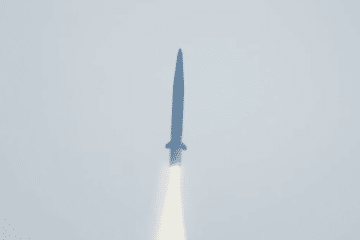A scale model of the KAAV-2 was unveiled for the first time by Hanwha Defense during ADEX 2019. Talking to Naval News during the 2021 edition held last month, Lance Corporal of the ROK Marine Corps, Han Jang, said that the development of KAAV-2 is almost complete. The service is now waiting for delivery preparations by 2023 or 2024. The program was supposed to reach initial operational capabilities (IOC) by this year, but this has been delayed.
With the absence of official information about KAAV-2 during ADEX 2021, Jang verbally noted that KAAV-2 can be operated regardless of water levels, and will be maneuvered by three marines with 21 expeditionary marines on board for landing.
Jang told Naval News:
“The 1st Division of Marine Corps initially planned to use improved KAAV-1 instead of acquiring the next-generation vehicle, but KAAV-1 will not go through the performance improvement project, since the Marine Corps decided to have KAAV-2.”
However, he was open to possibilities that improved KAAV-1s could be used as alternatives in case KAAV-2 development is further delayed or cancelled.



It was also confirmed that a similar number of new KAAV-2s would be introduced to the Marine Corps, since Marines have been using 164 KAAV-1s so far, if they choose to adopt KAAV-2 soon.
The most distinct feature between KAAV-1 and 2 is the speed. KAAV-1 can be operated with the maximum speed of 72 km/h on land and 13 km/h at sea, but the Marine Corps aims to increase the speed of KAAV-2 to 100 km/h on land and 30 km/h at sea, by changing the design of a blow plane that would help vehicles go through sea waves more efficiently. Additionally, Jang added that a gun turret and improved ordnance will be placed on KAAV-2, and that the new amphibious vehicle will not need a co-driver unlike the previous model.
The 139th Defense Business Project Committee, held by the Defense Acquisition Program Administration (DAPA) on September 28th, approved the acquisition of KAAV-2 to ensure maneuverability and survivability, in preparation for the replacement of the ageing KAAV-1s used by the ROK Marine Corps. The committee decided to develop KAAV-2’s engine indigenously by domestic research and development.






